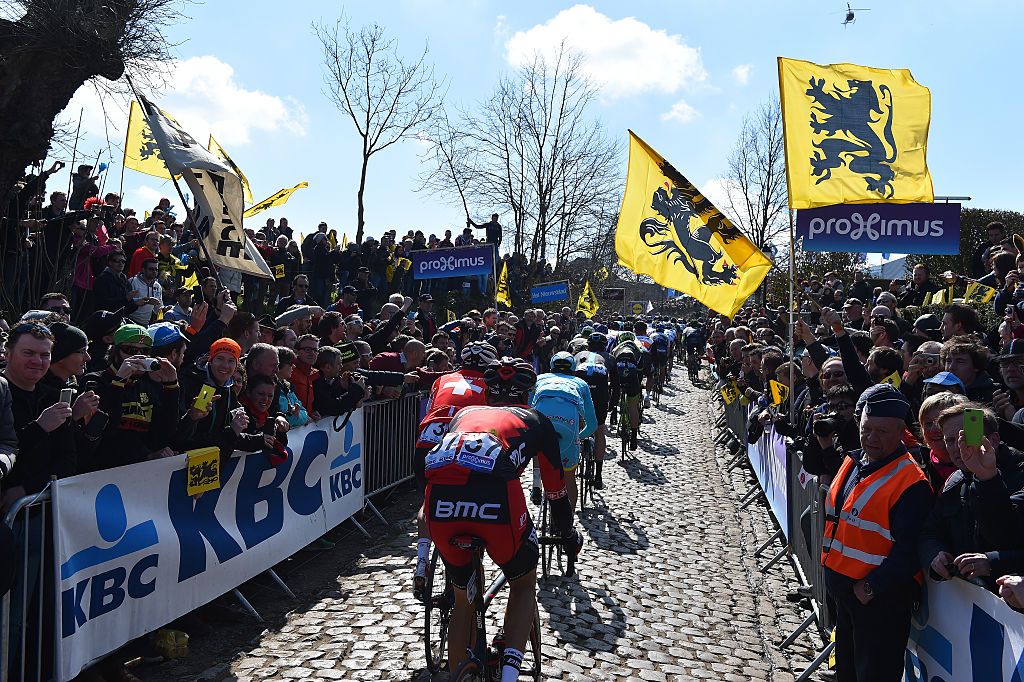Cycling’s monuments are legendary events, characterised by the biggest rivals battling it out on the most brutal parcours, with the Tour of Flanders perhaps the most exciting of them all.
Few races on the calendar match the importance and prestige of De Ronde and its gruelling cobbled sectors and relentless hellingen (climbs) are some of the most famous sights in pro cycling.
In a race often more than 250km in length for the men, and nowadays 150km for the women, the impact a 2.2km piece of cobbled road in Kluisbergen could have on the outcome could come into question – if it wasn’t the famed Oude Kwaremont.
Not as steep as the punishing Koppenberg and Paterberg climbs, but equally as important, the Kwaremont is the longest cobbled climb in the race and breeds an intense tactical battle as one of the key points on the route since the controversial redesign in 2012.
The Oude Kwaremont as we know it has been used in the race since 1974 and it means ‘old’ to separate it from the Nieuwe (‘new’) Kwaremont which runs parallel to it and is still used in races such as last year’s Dwars door Vlaanderen.
The Nieuwe Kwaremont used to be a cobbled road but has long been paved and makes up part of the N36 main road from Berchem to Ronse – less exciting than the cobbled back route into the village.
In terms of importance, however, the Kwaremont’s has risen significantly since 2012 when the course was redesigned to finish in Oudenaarde instead of Meerbeke which hosted the race’s finale from 1973 until the changes.
Since 2012 the Kwaremont has been completed three times in the men’s race and once in the women’s and its final ascent in combination with the Paterberg has become a crux point of the race.
From 1973-2011 there was a different duo of climbs that decided Flanders – the Muur van Geraardsbergen and the Bosberg. Their iconic status caused controversy as some people believed their removal meant the race was no longer the Tour of Flanders.
For the past five seasons, they have become the final two climbs at Omloop het Nieuwsblad on the run into Ninove, which takes place this year on February 25.
The climb itself does not start on cobbles and its steepest section is only 11.6% and comes in the middle section, which compared to the Paterberg maxing out at 20.3% and the Koppenberg at 22% may seem relatively bearable, but it is far from it.
Annemiek van Vleuten put the pressure on towards the end of the Kwaremont in last…
Click Here to Read the Full Original Article at CyclingNews RSS Feed…

